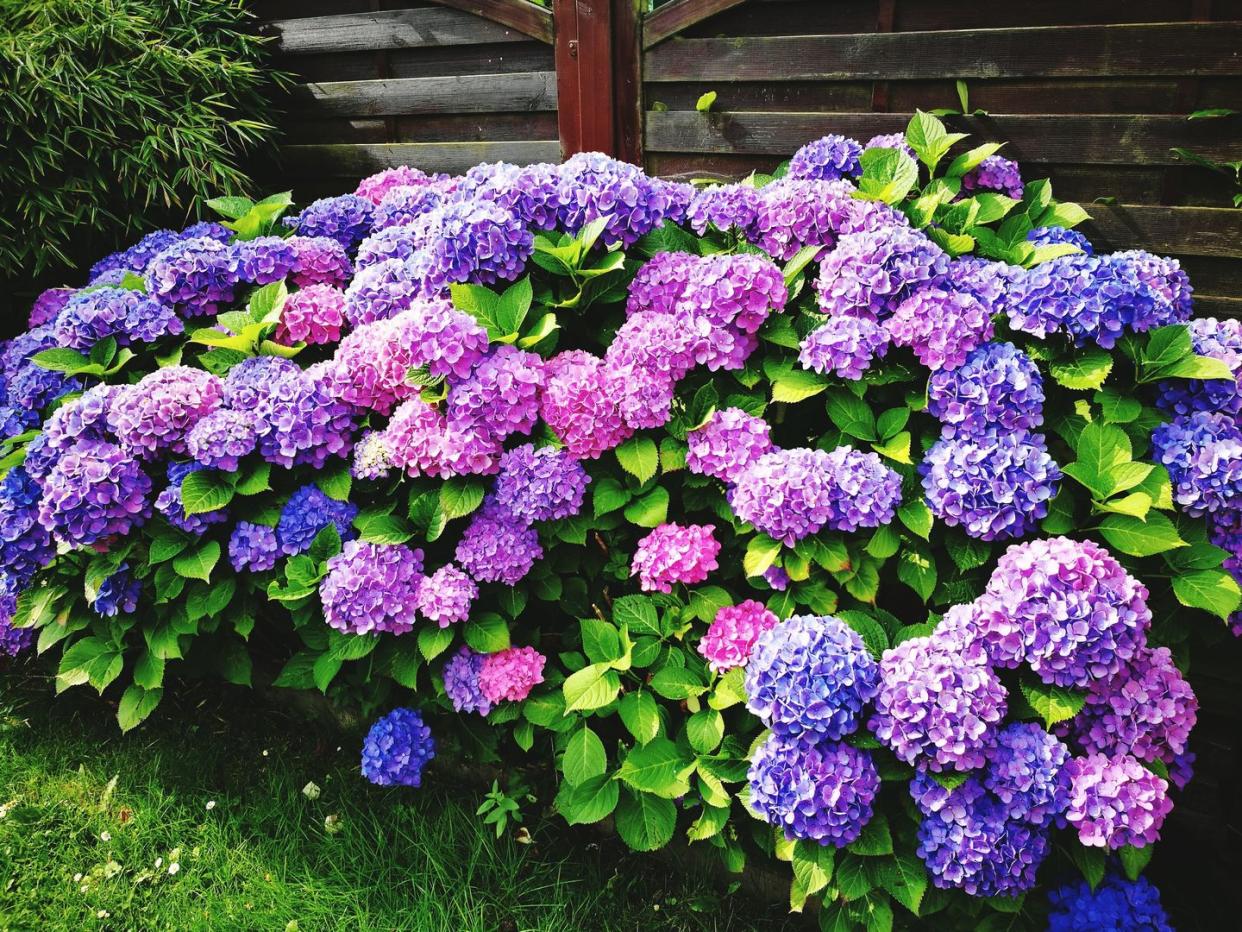How to Grow the Most Beautiful Hydrangeas This Summer
"I just adore hydrangeas," says Ree Drummond—and many other people do too! Hydrangeas are beautiful, resilient shrubs that are one of the few plants that can be grown from coast to coast! They have incredibly long bloom times from early summer to fall, and the papery flowers often stay intact throughout the winter, providing off-season interest when not much else is going on in your garden. Pollinators love many kinds of hydrangeas, so they're a wonderful way to attract and support healthy populations of bees, butterflies, and other beneficial insects.
Depending on the type, hydrangeas thrive in USDA Hardiness zones 3 to 10. If you give them the right conditions, they're actually one of the most low-maintenance plants to grow. Because of their popularity, many new types have been introduced in the last decade, so you have tons of choices for your garden! They come in every size from compact varieties that max out at two to three feet tall and wide to giants that reach six to eight feet tall and wide. Hydrangeas also make awesome dried flowers!
Here's what else you need to know about the different kinds of hydrangeas, including which kinds of hydrangeas you should plant as well as how to plant, prune, and care for them.
What kind of hydrangea should I plant?

There are several different types of hydrangeas you can grow. Each one of them has special qualities to love!
Bigleaf hydrangea (Hydrangea macrophylla): These big "mophead" or "lacecap" types have gorgeous lavish-looking flowers.
Peegee hydrangea (Hydrangea paniculata): These are the easiest type to grow and are extremely cold-hardy.
Annabelle hydrangea (Hydrangea arborescens): These are native to North America and cold hardy.
Mountain hydrangea (Hydrangea serrata): These are more shade tolerant types.
Oakleaf hydrangea (Hydrangea quercifolia): These are the only type that offer colorful fall foliage in addition to blooms.
What kind of light do hydrangeas need?
Hydrangeas of all types need some sun to bloom. Most types prefer full to part sun, though they do best with afternoon shade in hot climates. Mountain hydrangeas will tolerate more shade than other types and still bloom. Panicle hydrangeas will take full sun in cold climates.
What is the best way to plant hydrangeas?
Read the tag so you know your hydrangea's mature size. It might not look like much now in its tiny pot, but it's going to need room as it grows. Then dig a hole about two to three times as wide as the root ball, remove the plant from the container, and place it in the hole at the same depth as it was in the pot. If the roots were wrapped around inside the pot, rough up the surface of the root ball with your gloved hand to help stimulate growth.
Don't add anything else to the hole such as peat moss or potting soil; that's an old-school method and no longer recommended because the plant needs to learn to survive in the native soil. Otherwise, the roots will circle around inside the hole instead of expanding into the surrounding ground, and the plant eventually will die. If you have heavy soil, amend a large area by working compost into the space to improve drainage.
When should I prune my hydrangea?
This is a common question! When to prune depends on the type of hydrangea you have. Some types bloom on "new wood," which is growth from this season. Some bloom on "old wood," which is growth from last year, which means if you prune old wood hydrangeas in the spring, you'll cut off this year's flowers. And some types, known as reblooming hydrangeas, bloom on both new and old wood!
Panicle and smooth hydrangeas bloom on new wood, so you can prune them in early spring. It's fine to cut them back by about a third of their size to maintain their shape. Mountain and oakleaf flower on old wood, so they should be left alone from fall to spring so they'll flower in summer.
If you didn't keep the tag and you're not sure what type you have, don't prune any later than mid-summer or you risk taking off next year's blooms. Or wait to trim off any dead after your plant leafs out in the spring.
How do I make my hydrangeas turn blue?
Despite what you may have heard, only certain types of hydrangeas will turn blue based on the presence of aluminum in the soil. That means some bigleaf and mountain hydrangeas are able to change due to soil chemistry. But you need acidic soil, too. So, if you have a variety that can turn blue, add aluminum sulfate granules in the spring according to the package instructions. Your local university coop extension service or local nursery can help you ID what kind of hydrangea you have.
